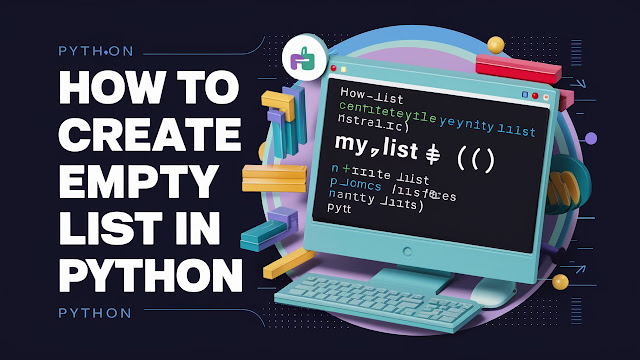How to Create an Empty List in Python
Creating an empty list in Python is a fundamental skill that every programmer should master. Lists are one of the most versatile data types in Python, allowing me to store an ordered collection of items. In this article, I will explore various methods to create an empty list in Python, along with practical examples and use cases.
What is a List in Python?
In Python, a list is an ordered, modifiable collection of things. It allows duplicate members, which means I can have multiple instances of the same value. Values included in square brackets define lists [].
Creating an Empty List in Python
There are several methods for making an empty list in Python:1. Using Square Brackets []
The simplest way to create an empty list in Python is by using empty square brackets. This is a widely used and simple procedure.
python# Creating an empty list using square brackets
empty_list = []
print(empty_list) # Output: []
2. Using the list() Function
Another way to create an empty list in Python is by using the built-in list() function. This method is also quite common and can be useful in scenarios where I want to emphasize that I am explicitly creating a list object.
python# Creating an empty list using the list() function
empty_list = list()
print(empty_list) # Output: []
When to Use Each Method
- Square Brackets
[]: Preferred for its simplicity and readability. list()Function: Useful when I want to highlight the creation of a list object, especially in complex codebases.
Practical Use Cases for Empty Lists in Python
Initializing Lists for Data Collection
Empty lists in Python are often used to initialize a list that will later be populated with data, such as user inputs, results from a computation, or items fetched from a database.
python# Example of initializing an empty list for data collection
data = []
for i in range(5):
data.append(i * 2)
print(data) # Output: [0, 2, 4, 6, 8]
Placeholder for Future Data
In some cases, I might need to create a placeholder list that will be populated later in the program.
python# Placeholder for future data
future_data = []
# Data will be added later
Visual Aids
Here is a screenshot showing the code example of creating an empty list in Python using both methods:
Flow Diagram
Below is a flow diagram illustrating how data is added to an empty list in Python during a loop:
Recommended Books on Python Programming
1. Python Crash Course by Eric Matthes
- An interactive, project-based introduction to Python programming.
2. Automate the Boring Stuff with Python by Al Sweigart
- Learn to automate repetitive tasks using Python.
3. Learning Python by Mark Lutz
- A comprehensive guide to learning Python from scratch.
Frequently Asked Questions (FAQs)
Q1: What is the difference between [] and list() in Python?
A1: Both [] and list() create an empty list in Python. The [] is more concise, while list() can make the intention of creating a list clearer in complex code.
Q2: Can I add elements to an empty list in Python after it's created?
A2: Yes, I can add elements to an empty list in Python using methods like append(), extend(), or by using the + operator.
Q3: Is there a limit to how many elements I can add to a list?
A3: The limit depends on the system's memory. Practically, lists can grow very large, but they are constrained by the available memory.
Conclusion
Creating an empty list in Python is a basic yet essential skill that can be achieved using either square brackets [] or the list() function. Understanding when and how to use each method will help me write cleaner and more efficient Python code. Whether I am initializing data collections or setting placeholders for future data, mastering this skill is crucial for any Python programmer.





